RETRACTED: KRAS Activation in Gastric Adenocarcinoma Stimulates Epithelial-to-Mesenchymal Transition to Cancer Stem-Like Cells and Promotes Metastasis
- PMID: 31217166
- PMCID: PMC6726517
- DOI: 10.1158/1541-7786.MCR-19-0077
RETRACTED: KRAS Activation in Gastric Adenocarcinoma Stimulates Epithelial-to-Mesenchymal Transition to Cancer Stem-Like Cells and Promotes Metastasis
Retraction in
-
Retraction: KRAS Activation in Gastric Adenocarcinoma Stimulates Epithelial-to-Mesenchymal Transition to Cancer Stem-Like Cells and Promotes Metastasis.Mol Cancer Res. 2024 Nov 1;22(11):1066. doi: 10.1158/1541-7786.MCR-24-0858. Mol Cancer Res. 2024. PMID: 39482978 Free PMC article. No abstract available.
Abstract
Our previous work showed that in a mouse model of gastric adenocarcinoma with loss of p53 and Cdh1 that adding oncogenic Kras (a.k.a. Tcon mice) accelerates tumorigenesis and metastasis. Here, we sought to examine KRAS activation in epithelial-to-mesenchymal transition (EMT) and generation of cancer stem-like cells (CSC). Transduction of nontransformed HFE-145 gastric epithelial cells with oncogenic KRASG12V significantly decreased expression of the epithelial marker E-cadherin, increased expression of the mesenchymal marker vimentin and the EMT transcription factor Slug, and increased migration and invasion by 15- to 17-fold. KRASG12V also increased expression of self-renewal proteins such as Sox2 and increased spheroid formation by 2.6-fold. In tumor-derived organoids from Tcon mice, Kras knockdown decreased spheroid formation, expression of EMT-related proteins, migration, and invasion; similar effects, as well as reversal of chemoresistance, were observed following KRAS knockdown or MEK inhibition in patient tumor-derived gastric adenocarcinoma cell lines (AGS and KATOIII). KRAS inhibition in gastric adenocarcinoma spheroid cells led to reduced AGS flank xenograft growth, loss of the infiltrative tumor border, fewer lung metastases, and increased survival. In a tissue microarray of human gastric adenocarcinomas from 115 patients, high tumor levels of CD44 (a marker of CSCs) and KRAS activation were independent predictors of worse overall survival. In conclusion, KRAS activation in gastric adenocarcinoma cells stimulates EMT and transition to CSCs, thus promoting metastasis. IMPLICATIONS: This study provides rationale for examining inhibitors of KRAS to block metastasis and reverse chemotherapy resistance in gastric adenocarcinoma patients.
©2019 American Association for Cancer Research.
Conflict of interest statement
Conflict of interest: All authors have no conflicts of interest.
Figures
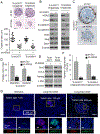
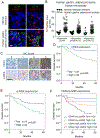
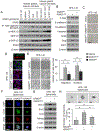
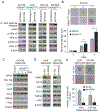
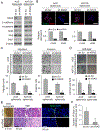
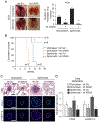
Similar articles
-
RETRACTED: Role of Rac1 Pathway in Epithelial-to-Mesenchymal Transition and Cancer Stem-like Cell Phenotypes in Gastric Adenocarcinoma.Mol Cancer Res. 2017 Aug;15(8):1106-1116. doi: 10.1158/1541-7786.MCR-17-0053. Epub 2017 May 1. Mol Cancer Res. 2017. Retraction in: Mol Cancer Res. 2024 Nov 1;22(11):1068. doi: 10.1158/1541-7786.MCR-24-0857. PMID: 28461325 Free PMC article. Retracted.
-
RETRACTED: KMT2C Mutations in Diffuse-Type Gastric Adenocarcinoma Promote Epithelial-to-Mesenchymal Transition.Clin Cancer Res. 2018 Dec 15;24(24):6556-6569. doi: 10.1158/1078-0432.CCR-17-1679. Epub 2018 Aug 14. Clin Cancer Res. 2018. Retraction in: Clin Cancer Res. 2024 Oct 15;30(20):4801. doi: 10.1158/1078-0432.CCR-24-2132. PMID: 30108106 Free PMC article. Retracted.
-
HIF-1α induces the epithelial-mesenchymal transition in gastric cancer stem cells through the Snail pathway.Oncotarget. 2017 Feb 7;8(6):9535-9545. doi: 10.18632/oncotarget.14484. Oncotarget. 2017. PMID: 28076840 Free PMC article.
-
Role of epithelial-mesenchymal transition in gastric cancer initiation and progression.World J Gastroenterol. 2014 May 14;20(18):5403-10. doi: 10.3748/wjg.v20.i18.5403. World J Gastroenterol. 2014. PMID: 24833870 Free PMC article. Review.
-
Mechanisms of Resistance to KRAS Inhibitors: Cancer Cells' Strategic Use of Normal Cellular Mechanisms to Adapt.Cancer Sci. 2025 Mar;116(3):600-612. doi: 10.1111/cas.16441. Epub 2024 Dec 27. Cancer Sci. 2025. PMID: 39726416 Free PMC article. Review.
Cited by
-
Modeling human gastric cancers in immunocompetent mice.Cancer Biol Med. 2024 Jun 28;21(7):553-70. doi: 10.20892/j.issn.2095-3941.2024.0124. Cancer Biol Med. 2024. PMID: 38940675 Free PMC article. Review.
-
Impacts and mechanisms of metabolic reprogramming of tumor microenvironment for immunotherapy in gastric cancer.Cell Death Dis. 2022 Apr 20;13(4):378. doi: 10.1038/s41419-022-04821-w. Cell Death Dis. 2022. PMID: 35444235 Free PMC article. Review.
-
Oxaliplatin and 5-fluorouracil promote epithelial-mesenchymal transition via activation of KRAS/ERK/NF-κB pathway in KRAS-mutated colon cancer cells.Mol Cell Biochem. 2025 May;480(5):2985-2999. doi: 10.1007/s11010-024-05157-z. Epub 2024 Nov 25. Mol Cell Biochem. 2025. PMID: 39586908
-
Peristalsis-Associated Mechanotransduction Drives Malignant Progression of Colorectal Cancer.Cell Mol Bioeng. 2023 Aug 11;16(4):261-281. doi: 10.1007/s12195-023-00776-w. eCollection 2023 Aug. Cell Mol Bioeng. 2023. PMID: 37811008 Free PMC article.
-
Prognostic value of circulating tumor DNA in pancreatic cancer: a systematic review and meta-analysis.Aging (Albany NY). 2020 Dec 9;13(2):2031-2048. doi: 10.18632/aging.202199. Epub 2020 Dec 9. Aging (Albany NY). 2020. PMID: 33318293 Free PMC article.
References
Publication types
MeSH terms
Substances
Grants and funding
LinkOut - more resources
Full Text Sources
Medical
Molecular Biology Databases
Research Materials
Miscellaneous

